How Do I Know IF My Sewing Machine Is Good
Your sewing machine is the heart of your craft, whether you’re a beginner or an experienced sewist. But how do you really know if your machine is a good one? You might ask yourself: Is it meeting my needs, or is it time for an upgrade? Evaluating a sewing machine’s quality goes beyond just turning it on and stitching a few lines. In this guide, we’ll explore the key indicators of a good sewing machine, how to test its performance, and what to consider if you’re thinking about an upgrade. Let’s dive into the details and find out if your machine truly measures up!
Key Indicators of a Good Sewing Machine
Consistent Stitch Quality
The hallmark of a good sewing machine is consistent stitch quality. Whether you’re working on a straight stitch, zigzag, or decorative stitch, your machine should produce even, well-formed stitches that securely hold your fabric together. If you’re seeing skipped stitches, uneven tension, or loose threads, it might be time to adjust your machine’s settings or consider professional servicing.
Smooth Operation and Quiet Performance
A sewing machine that runs smoothly and quietly is another sign of quality. You shouldn’t hear loud clunking, grinding, or strange noises when you’re sewing. These sounds might indicate issues with the internal components or general wear and tear. A good sewing machine operates seamlessly, allowing you to focus on your projects without distractions.
Durability and Longevity
A high-quality sewing machine should be built to last. Machines with metal components tend to be more durable and can withstand regular use over time. If your machine has been serving you well for years without frequent repairs, that’s a strong indicator that it’s a solid investment. Longevity is key when it comes to determining if your sewing machine is good.
Features That Enhance Sewing Machine Performance

Adjustable Stitch Length and Width
Versatility is essential in a good sewing machine, and one feature that enhances this is adjustable stitch length and width. Being able to tailor your stitches to suit different fabrics and projects makes your sewing experience more efficient. Whether you’re working with delicate silk or heavy denim, a machine that allows you to adjust stitch settings will be your best friend.
Multiple Presser Feet and Attachments
A good sewing machine should come with a variety of presser feet and attachments to handle different techniques and projects. From zipper feet to buttonhole attachments, these accessories expand your machine’s capabilities. If your machine includes several presser feet, it shows that it’s designed for versatility, which is a definite plus.
Easy Threading and Bobbin Winding
Threading your machine and winding the bobbin should be simple tasks. A machine with automatic threading and an easy-to-use bobbin winder saves you time and reduces frustration. If these functions are difficult or inconsistent, it may be a sign that your machine isn’t living up to modern standards.
Comparing Your Sewing Machine with Industry Standards

Basic Sewing Machine Features
At a minimum, your sewing machine should offer multiple stitch options, reliable tension control, and a strong motor. These basic features ensure that your machine can handle a wide range of sewing tasks. If your machine checks these boxes, it’s likely a good fit for most projects.
Advanced Features for Experienced Sewists
For more experienced sewists, advanced features such as an automatic needle threader, programmable stitch patterns, and speed control can significantly improve your sewing experience. These features allow for greater precision and creativity in your projects. If your machine includes some of these higher-end features, you’re working with a quality model.
How Does Your Machine Stack Up?
Take a moment to compare your sewing machine with current industry standards. Does it have the essential features needed for your projects? If not, you might find that an upgrade could make your sewing experience more enjoyable and efficient.
Testing Your Sewing Machine’s Performance
Fabric Versatility: Handling Different Materials
A good sewing machine should perform well with a variety of fabrics, from lightweight cotton to heavier materials like denim or leather. Test your machine by sewing on different types of fabric to assess its versatility. If it handles various materials without difficulty, that’s a sign of a good machine.
Buttonhole and Zipper Installation
Creating buttonholes and installing zippers are common tasks, and a good sewing machine should make these processes simple and effective. If your machine struggles with these techniques, it might not be meeting the standards of a quality machine. Precision in these areas is essential for professional-looking results.
Speed and Precision in Sewing
Speed and precision are crucial in sewing, especially for complex projects. A good machine should allow you to sew at higher speeds without compromising on stitch quality. Test your machine’s speed settings and see how well it handles intricate tasks. If it maintains precision at various speeds, you’ve got a solid machine.
Signs That Your Sewing Machine Needs an Upgrade

Frequent Breakdowns or Repairs
If your machine is constantly breaking down or in need of repairs, it may be time to consider an upgrade. Frequent issues can indicate that your machine is reaching the end of its lifespan or that it isn’t built for the types of projects you’re working on. An unreliable machine can lead to frustration and wasted time.
Difficulty Handling Complex Projects
As your sewing skills progress, your machine needs to keep up. If you’re struggling with complex projects or finding that your machine lacks the features needed for advanced techniques, it might be time to upgrade. A good sewing machine should grow with your abilities, not hold you back.
Outdated Technology and Features
Sewing machine technology has come a long way in recent years. If your machine lacks modern features like computerized settings, automatic threading, or a variety of decorative stitches, it might be considered outdated. Upgrading to a newer model can make your sewing experience more efficient and enjoyable.
When to Consider Professional Servicing
Routine Maintenance for Optimal Performance
Even the best sewing machines need regular maintenance to keep them running smoothly. If your machine is showing signs of wear, such as inconsistent stitching or difficulty with certain fabrics, it may be time for professional servicing. Regular maintenance can extend the life of your machine and ensure it operates at its best.
Troubleshooting Common Issues
If you’re experiencing issues with your sewing machine, such as thread jamming or tension problems, troubleshooting the problem is essential. Sometimes a simple fix, like cleaning the machine or adjusting the tension, can resolve the issue. However, if problems persist, professional servicing may be necessary to get your machine back on track.
How Often Should You Service Your Sewing Machine?
Regular servicing can keep your sewing machine in top condition. It’s recommended to service your machine once a year, especially if you use it frequently. Preventative maintenance can catch minor issues before they become major problems and help you avoid costly repairs down the line.
Making the Most of Your Current Sewing Machine

Regular Cleaning and Maintenance
Keeping your sewing machine clean is key to ensuring it runs smoothly. Dust, lint, and thread buildup can affect performance, so regular cleaning is a must. Follow your machine’s manual for specific maintenance instructions, and don’t hesitate to get it professionally serviced if needed.
Using Quality Accessories and Materials
The accessories and materials you use with your sewing machine matter. Invest in high-quality needles, threads, and fabrics to ensure smooth operation and excellent results. Cheap or worn-out accessories can lead to poor performance and frustration, so it’s worth spending a little more for quality.
Simple Upgrades to Improve Performance
If you’re not ready to buy a new machine, consider making simple upgrades to your current one. New presser feet, an extension table, or even updated software (for computerized models) can improve your sewing experience. Small investments can make a big difference in how your machine performs.
Conclusio
Assessing whether your sewing machine is good involves looking at its performance, features, and longevity. If your machine produces consistent stitches, operates smoothly, and has the necessary features for your projects, it’s likely a keeper. However, if you’re dealing with frequent issues, struggling with advanced techniques, or feeling limited by outdated features, it might be time for an upgrade. Regular maintenance and careful evaluation will help you get the most out of your current machine—or guide you toward finding a better one.
FAQs
1. How can I tell if my sewing machine needs servicing?
If your machine is producing inconsistent stitches, making unusual noises, or struggling with certain fabrics, it may be time for servicing.
2. How often should I clean my sewing machine?
It’s a good idea to clean your machine after every few projects, especially if you’re working with lint-prone fabrics like fleece or denim.
3. What are some signs that my sewing machine is outdated?
If your machine lacks modern features like computerized settings, automatic threading, or advanced stitch options, it might be considered outdated.
4. Can I improve my sewing machine’s performance without upgrading?
Yes, simple upgrades like new presser feet, an extension table, or even regular professional servicing can improve your machine’s performance.
5. How do I know if I need a new sewing machine?
If your current machine is constantly breaking down, struggling with advanced techniques, or no longer meeting your sewing needs, it might be time to consider an upgrade.
Visit our Sewing Machine Shop for the best sewing machine deals.
For more insightful articles, visit our Medium page !

